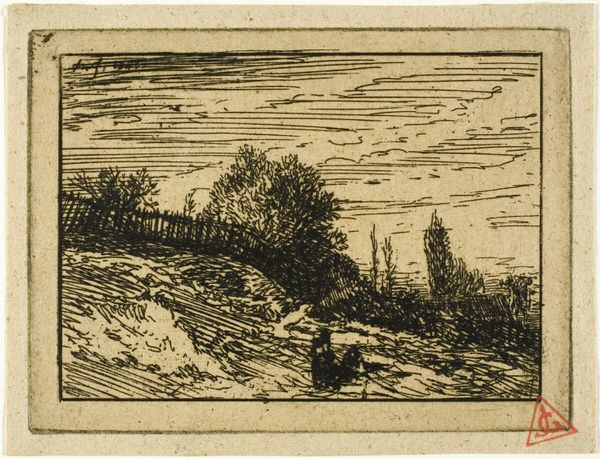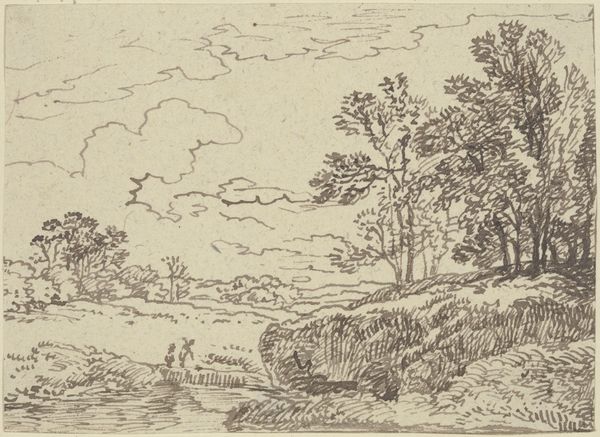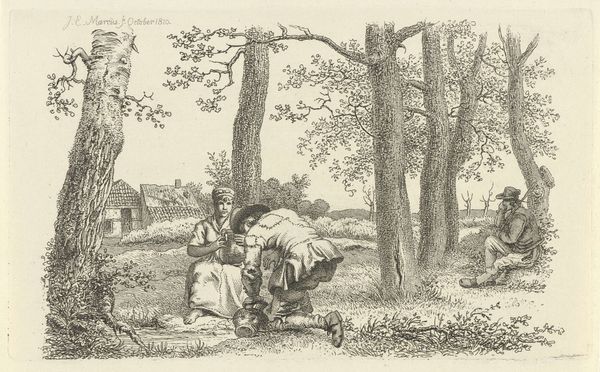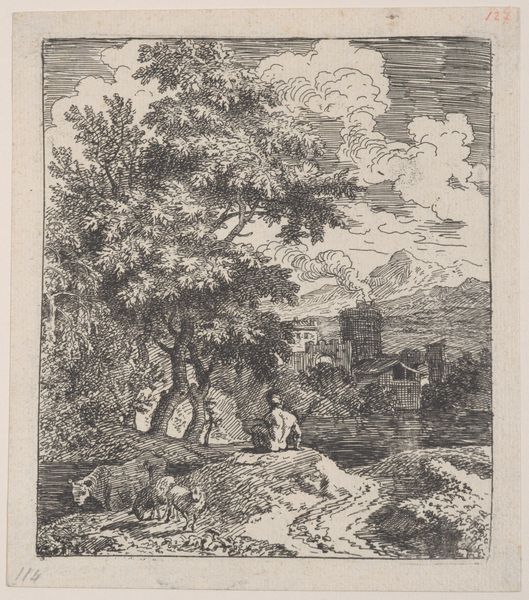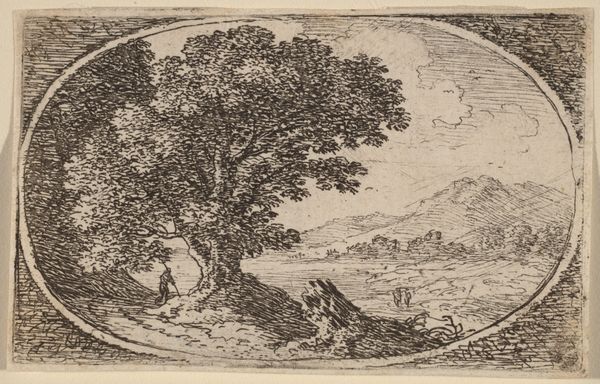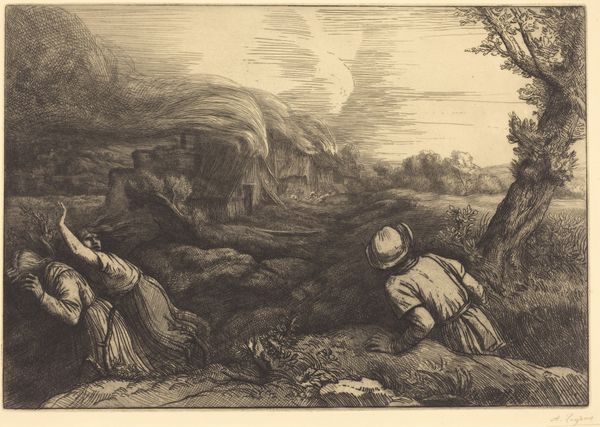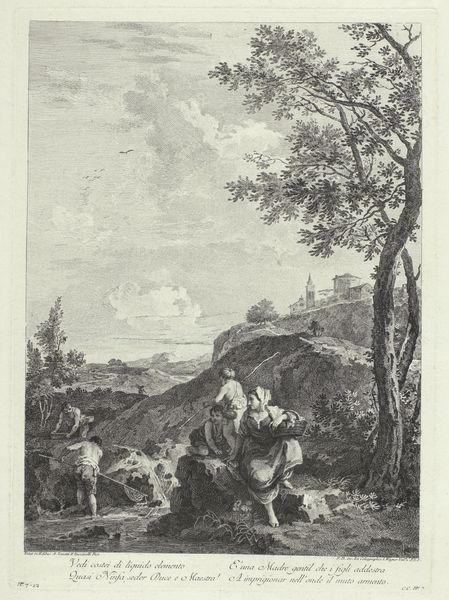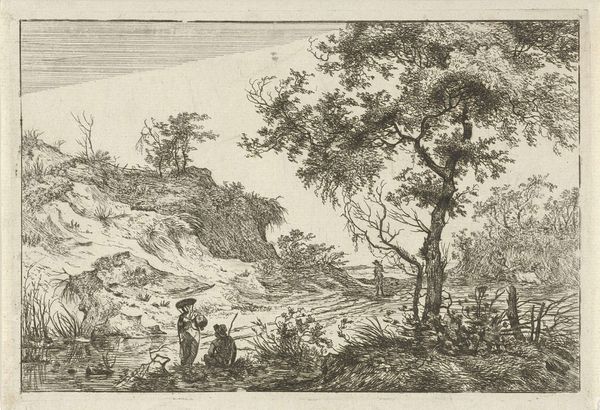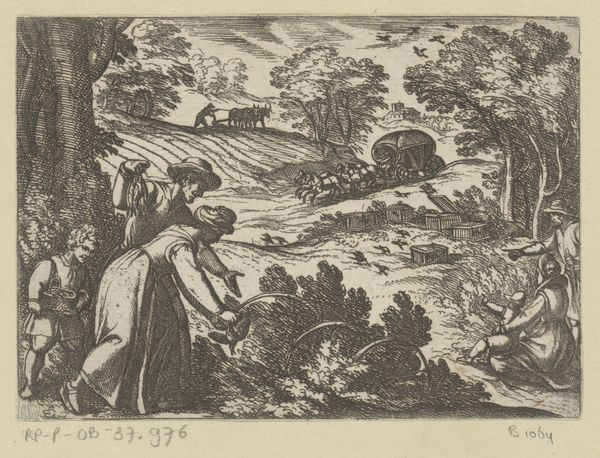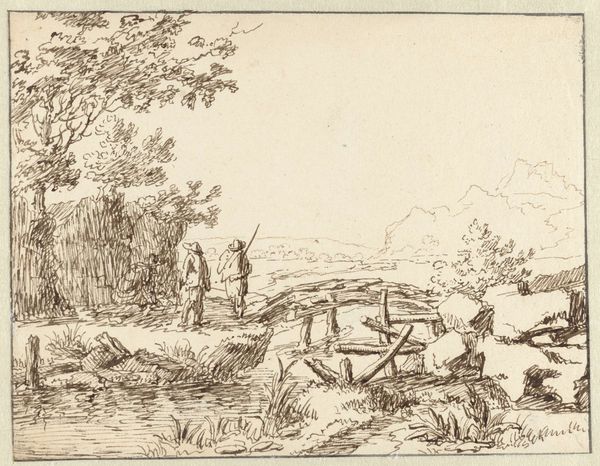
drawing, print, etching, paper, ink
#
drawing
#
ink drawing
#
narrative-art
# print
#
etching
#
landscape
#
etching
#
figuration
#
paper
#
ink
#
romanticism
Dimensions: 67 × 99 mm (image); 71 × 102 mm (sheet); 158 × 211 mm (sheet)
Copyright: Public Domain
Editor: This is "Crossing the Meadow," an etching in ink on paper by Charles Jacque, created in 1846. I'm immediately struck by how the figures are rendered with such delicate lines, yet the landscape feels so vast and open. What do you see in this piece, looking at it from your perspective? Curator: Structurally, I'm drawn to the stark contrast between the meticulously detailed foreground and the more loosely defined sky. Note how the artist utilizes hatching and cross-hatching to create depth and texture, particularly in the depiction of the figures and the foliage. The linearity almost evokes a sense of musicality, doesn’t it? A harmony, or perhaps a tension between the crafted mark and open space? Editor: Absolutely, the lines definitely guide your eye. It’s interesting you mention the sky – I initially saw it as empty, but now I notice how those horizontal lines create a real sense of atmosphere. Are those artistic decisions deliberate, or just techniques of the time? Curator: The formal aspects of this etching, its reliance on line and value rather than color, create an aesthetic experience independent of any external reference. The density and direction of the lines control how light reflects, offering this open atmosphere you mentioned, despite the work’s dimensions. Doesn't it suggest Jacque may be investigating modes of expression in the medium itself? How are those marks expressive rather than representative? Editor: I see what you mean, it almost detaches it from being just a picture. Thinking about the details of line and value makes it so much more complex! I'll definitely be paying more attention to the artistic techniques rather than subject matter going forward. Curator: Indeed. Formal qualities allow us to apprehend art as art. The materiality provides us access to deeper structures.
Comments
No comments
Be the first to comment and join the conversation on the ultimate creative platform.
